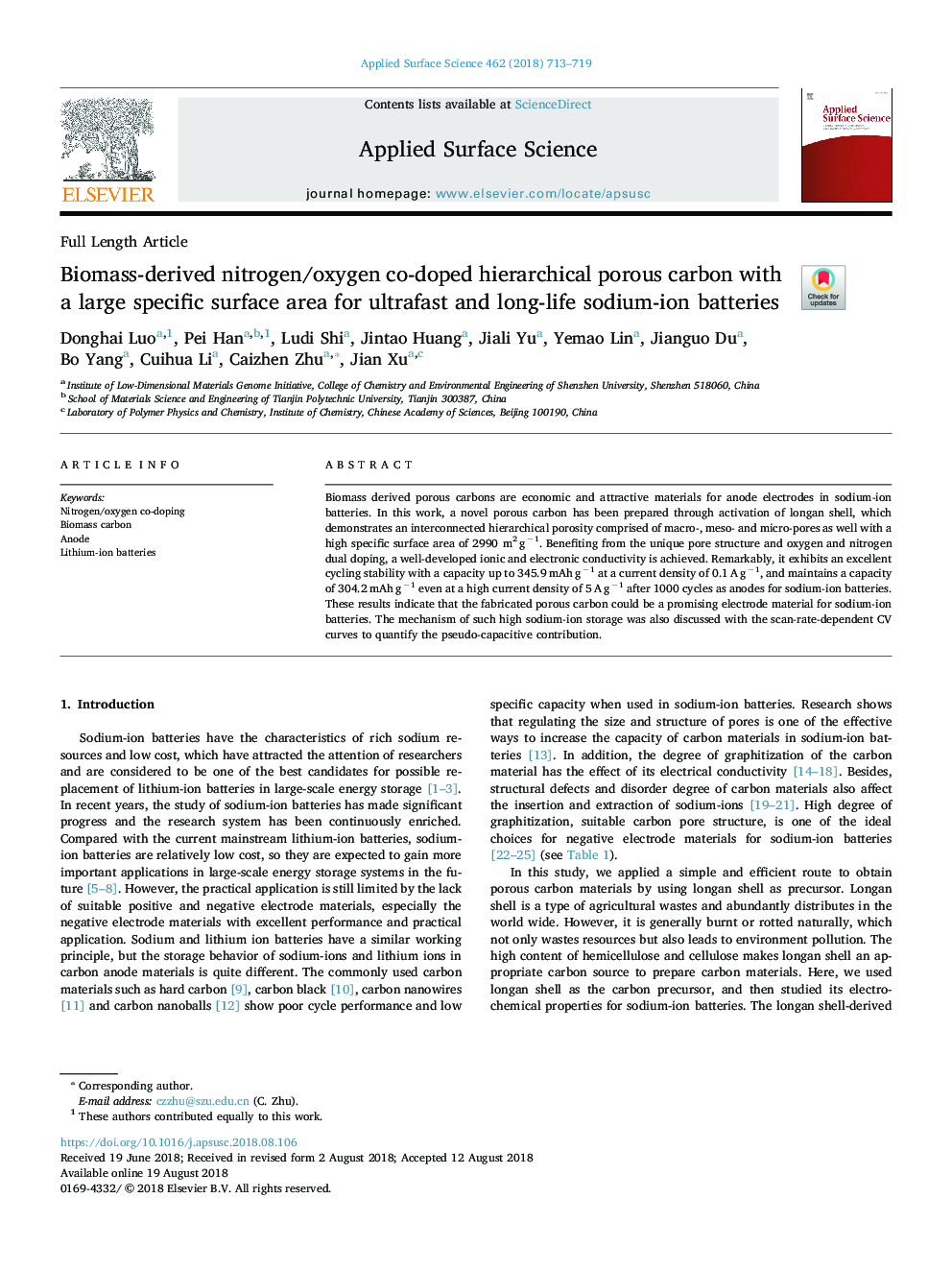| Article ID | Journal | Published Year | Pages | File Type |
|---|---|---|---|---|
| 11006485 | Applied Surface Science | 2018 | 7 Pages |
Abstract
Biomass derived porous carbons are economic and attractive materials for anode electrodes in sodium-ion batteries. In this work, a novel porous carbon has been prepared through activation of longan shell, which demonstrates an interconnected hierarchical porosity comprised of macro-, meso- and micro-pores as well with a high specific surface area of 2990â¯â¯m2â¯gâ1. Benefiting from the unique pore structure and oxygen and nitrogen dual doping, a well-developed ionic and electronic conductivity is achieved. Remarkably, it exhibits an excellent cycling stability with a capacity up to 345.9â¯mAhâ¯gâ1 at a current density of 0.1â¯Aâ¯gâ1, and maintains a capacity of 304.2â¯mAhâ¯gâ1 even at a high current density of 5â¯Aâ¯gâ1 after 1000 cycles as anodes for sodium-ion batteries. These results indicate that the fabricated porous carbon could be a promising electrode material for sodium-ion batteries. The mechanism of such high sodium-ion storage was also discussed with the scan-rate-dependent CV curves to quantify the pseudo-capacitive contribution.
Related Topics
Physical Sciences and Engineering
Chemistry
Physical and Theoretical Chemistry
Authors
Donghai Luo, Pei Han, Ludi Shi, Jintao Huang, Jiali Yu, Yemao Lin, Jianguo Du, Bo Yang, Cuihua Li, Caizhen Zhu, Jian Xu,
